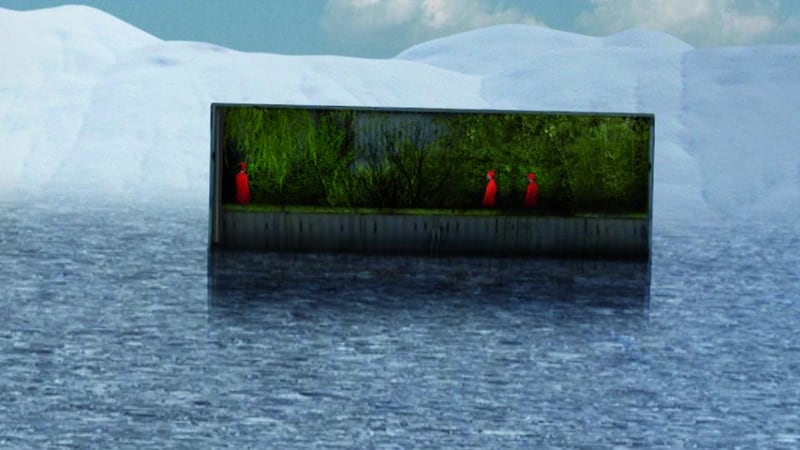International participants arriving at the first Light Moves Festival of Screendance in Limerick this weekend will probably have to answer a pretty obvious question from their taxi drivers: what is screendance? According to festival directors Jürgen Simpson and Mary Wycherley, the term encompasses film and video works that have movement or dance at their core.
“It is distinct from film works in which dialogue plays the main role,” says Wycherley. Just as dance can include ballroom, ballet, hip-hop or contemporary, screendance isn’t rooted in any one genre. “It can embrace an incredibly wide range of work, like music video, comedy, silent movies and video art.”
Although the festival is new, screendance is firmly embedded in Irish contemporary dance practice. Initiatives such as Dance Ireland's One-Minute Dance Films and RTÉ's Dance on the Box have commissioned more than 20 dance films since 2006, and many choreographers, including Wycherley, have chosen the screen as a way to present their work. She has directed 10 screendance works, and she lectures in multidisciplinary practice and dance film as part of the MA in contemporary dance at the Irish World Academy of Music and Dance.

In the past, choreographers interested in creating dance films collaborated with film directors, but the advent of more affordable video-editing software means the choreographer can become director.
“It is happening more and more as people upskill with technology,” says Wycherley. In addition to changing how their movement is seen, working with film or video changes how choreographers construct their work. Artistic decisions are funnelled into the few hours of rehearsal time that the choreographers have with dancers, but while working with video or film, they can make more reflective decisions over a longer period, sitting in front of their computers.
“Nevertheless it’s a complex undertaking,” she says. “You really need to understand film and its aesthetics, as well as dance and its aesthetics.”
While curating Light Moves, Wycherley and Simpson, a composer and director of the Digital Media and Arts Research Centre in Limerick, regularly saw works with a strong dance component but a naive approach to film.
“Great choreographers don’t necessarily make great directors, and there is a danger that cliches or a single aesthetic become prevalent within screendance,” says Simpson. Watching hundreds of videos, he noticed patterns emerging, such as similar ways of pairing music and dance. The programme they chose for Light Moves kicks back at any notion of a single approach and highlights a range of artistic viewpoints.
“That’s the crux of our curation,” says Wycherley. “We want to make a strong statement that boundaries need to be pushed and unique approaches found, not just within dance, but within film or sound.”
Nor do the works have to include dance. One of the films is Liz Aggiss's Beach Party Animal, which captures people on the beach in Brighton. "Many of the people that it captures have no idea they are being filmed. There is no dance in the movement captured, but the choreography is achieved by the editing, turning it into a captivating, funny experience," she says.
Motionless frames
Vanishing Point, a commentary on environmental degradation by Beate Hecher and Markus Keim, features almost no movement from the human body, in fact almost no movement at all. "The only thing that slowly changes over the 15 minutes is that actual environment," says Simpson. As collaborators on nine films, he and Wycherley are also interested in exploring how the camera can choreograph.
"Two years ago, we created The Dance of Making, which filmed various men who were practising craftsmen, such as drystone wallers or weavers," says Simpson. "The film was trying to investigate the particular quality that exists within men or people who have created things with their hands or body for most of their lives and have integrated those movements into their physicality." The film uses split-screen to present the movement and the object they are working on side by side. Like Beach Party Animal, the movement is not dance-based, but the movement's choreographic quality is very clear.
Alongside the pre-programmed events, the festival’s Open Call strand invited works for the single screen as well as multiscreen and installation works. Again, the curation was informed by the potential of film and its ability to engage with movement and dance and vice-versa. They received about 140 works from 18 countries, and they accepted 60. Large-scale productions are contrasted with low-budget films. “We have seen incredibly strong works from low-budget, emerging artists who are clearly aware of conceptual approaches that are common parlance in the broader field of the visual arts,” says Simpson. “And others who have clearly taken the time to discover the possibilities of film language.”
Light Moves will present more than 50 hours of choreography and movement for camera over four days. It includes family screenings of Fantasia and Mad Hot Ballroom and has been chosen as one of Limerick City of Culture's legacy projects.
“It’s a varied programme,” says Wycherley. “However, our hope is that each of these will open a different doorway into the possibilities of screendance.”








